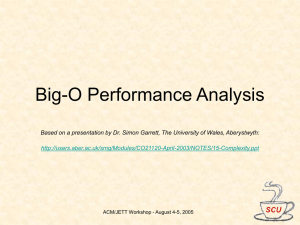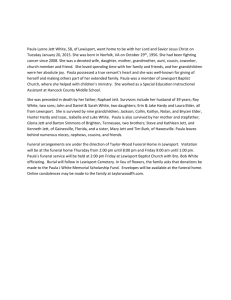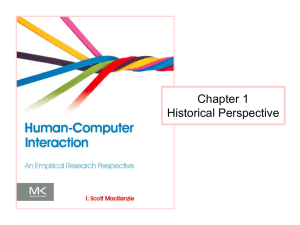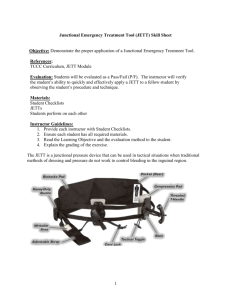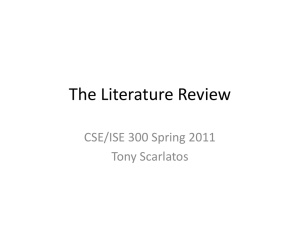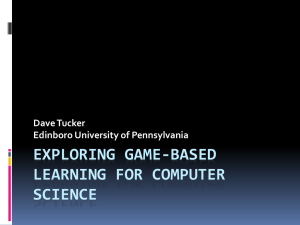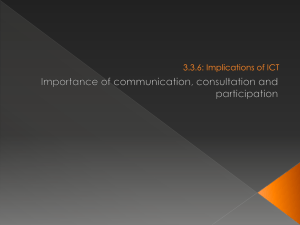Using Visualization Tools to Teach Data Structures and Algorithms
advertisement
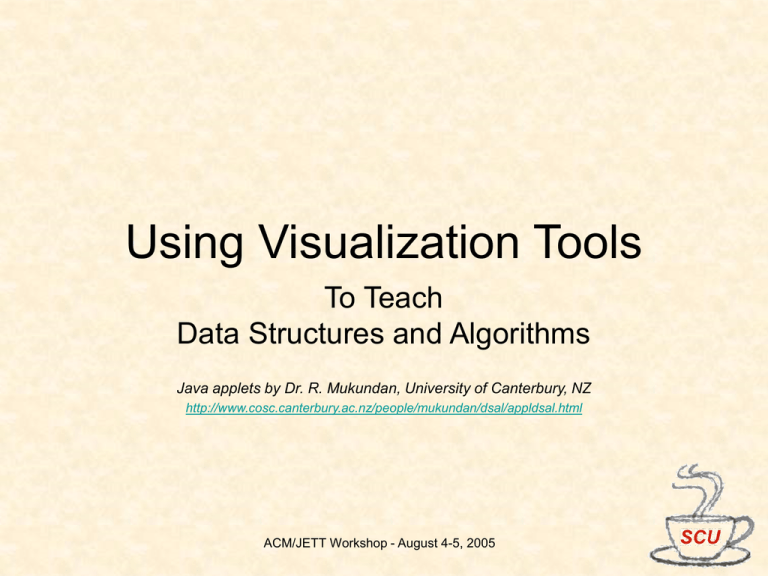
Using Visualization Tools To Teach Data Structures and Algorithms Java applets by Dr. R. Mukundan, University of Canterbury, NZ http://www.cosc.canterbury.ac.nz/people/mukundan/dsal/appldsal.html ACM/JETT Workshop - August 4-5, 2005 Linked Lists • A linked list is a sequence of items arranged one after another, with each containing a link to the next. • Insertions may be made at either end. • Removals can only be made at the beginning. • Access is sequential starting from the first item. ACM/JETT Workshop - August 4-5, 2005 Queue • A queue is a “First-In, First-Out” (FIFO) data structure similar to a line of people at a ticket window. • Insertions are made at one end, called the tail. • Removals are made at the other end, called the head. ACM/JETT Workshop - August 4-5, 2005 Queue as Linked List • A queue is often implemented using a linked list. • The first position in the list becomes the head. – That’s the only place in a linked list where removals are possible! • The last position in the list becomes the tail. ACM/JETT Workshop - August 4-5, 2005 Stack • A stack is an ordered collection of items that can only be accessed at one end called the “top” of the stack. • Insertions are “pushed” onto the top. • Removals are “popped” off the top in the reverse order of insertions. • A stack is a “Last-In, First-Out” (LIFO) data structure. ACM/JETT Workshop - August 4-5, 2005 Stack as Linked List • A stack is often implemented using a linked list. • The first position in the list becomes the top of the stack. – That’s the only place in a linked list where both insertions and removals are possible. • The pointer to the last position in the list is unused. ACM/JETT Workshop - August 4-5, 2005 Linear Search • A linear search examines items sequentially. • Assuming that the items are unordered, then – The worst-case number of probes is N. – The average number of probes is N÷2. ACM/JETT Workshop - August 4-5, 2005 Binary Search • A binary search is similar to a dictionary search. – Items must be ordered. – Start at the middle, then search left or right half. Repeat until found. • The worst-case number of probes is log2N. • The average number of probes is (log2N)÷2. ACM/JETT Workshop - August 4-5, 2005 Bubble Sort • Pass 1: Process items 0..N-1 (all) • Pass 2: Process items 0..N-2 … • Pass N-1: Process items 0..1 • Each Pass: Move largest value to the end. – sequentially compare adjacent pairs and exchange when out of order. ACM/JETT Workshop - August 4-5, 2005 Merge Sort • Divide the data into two subsets of equal size. • Sort each subset – Invoke Merge Sort recursively • Merge the two subsets into a single set. • Note that comparisons and exchanges do not occur until recursion has fully descended. ACM/JETT Workshop - August 4-5, 2005 Binary Tree Traversal • Pre-Order: – Process the root – Pre-Order traverse left subtree – Pre-Order traverse right subtree • In-Order: – In-Order traverse left subtree – Process the root – In-Order traverse right subtree • Post-Order: – Post-Order traverse left subtree – Post-Order traverse right subtree – Process the root ACM/JETT Workshop - August 4-5, 2005

